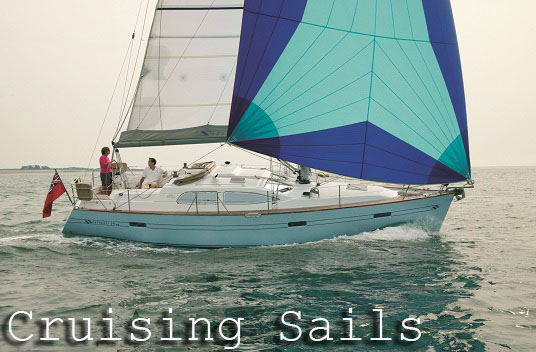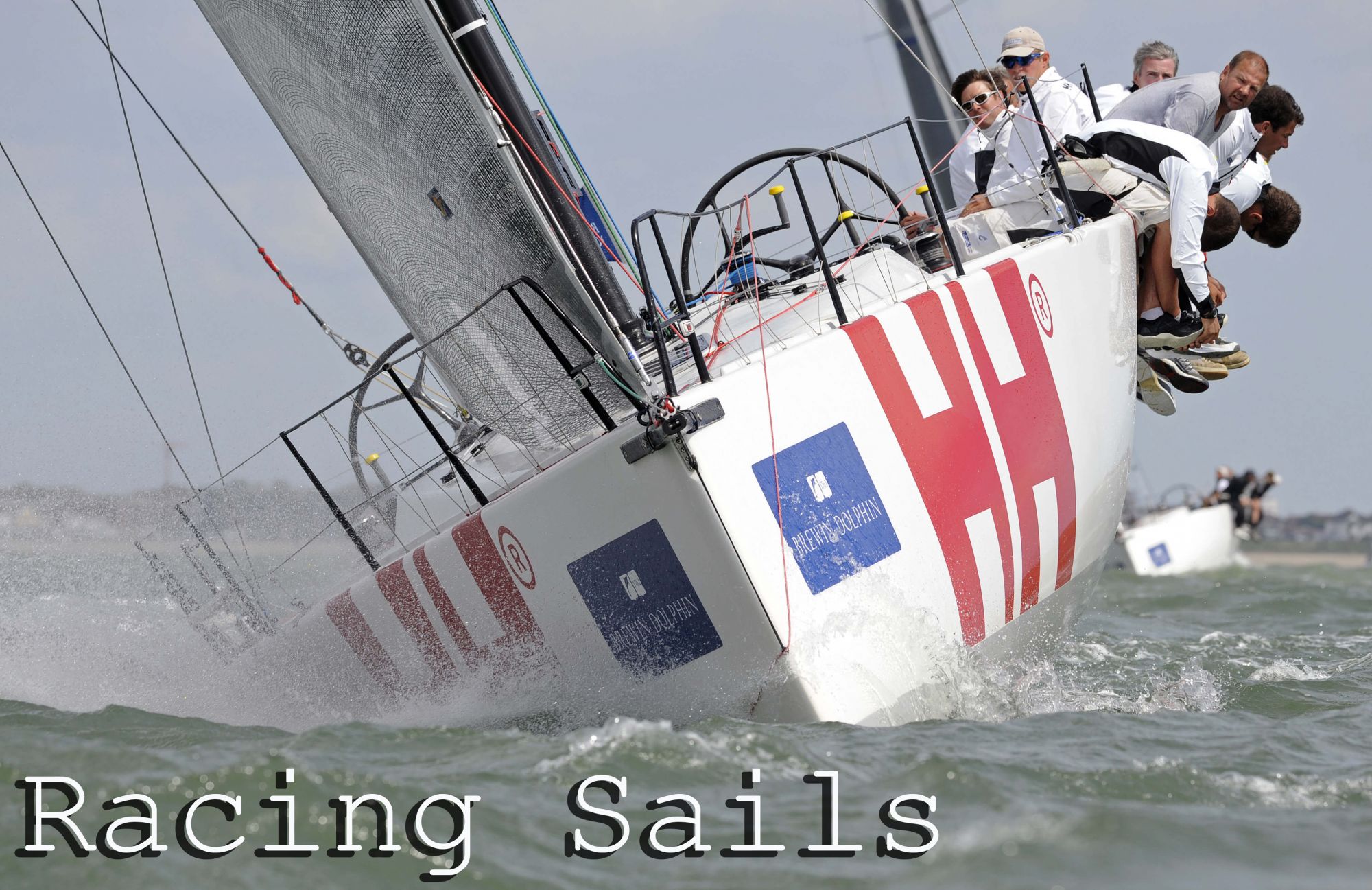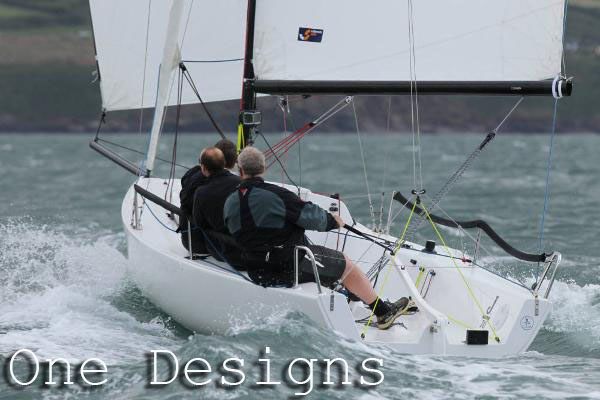6th March 2023« All News Items
A Guide to Headsail Trimming
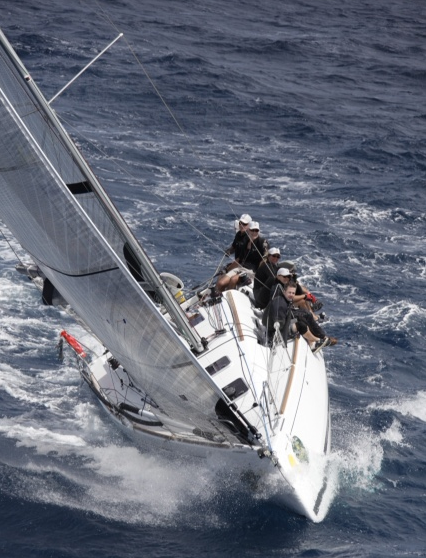 Whatever type of sailing you do, trimming the headsail is a matter of using all of the controls available to get the best out of your sails. We'd like to pass on as much of our knowledge as possible about the subject so that all the hours of time in the design and manufacture of your sails, in addition to the effort you put in to maximise the performance of your yacht, will be justly rewarded.
Whatever type of sailing you do, trimming the headsail is a matter of using all of the controls available to get the best out of your sails. We'd like to pass on as much of our knowledge as possible about the subject so that all the hours of time in the design and manufacture of your sails, in addition to the effort you put in to maximise the performance of your yacht, will be justly rewarded.
These tips are not just for race-boat crews: they equally apply to Cruising yachts where the gains from a well trimmed and well designed Headsail will help you to get to the next port faster and make your boat a lot more comfortable along the way.
The selection of the correct headsail for different wind conditions is affected by wind strength, angle of heel, sea conditions and boat design.
When you step onboard a yacht for the first time as a trimmer the first thing to establish is what does the sail inventory look like and what settings are marked to help you maximise the performance from the first hoist?
What range of sails are onboard?
What are their wind ranges?
How old are they?, a new Code 2 Jib might be faster than an old Code 1 Jib even within the Code 1 Jib's wind range.
Are all the sailbags and sails marked clearly so there can be no confusion?
Do they have good crossovers or are there any holes in the inventory?
Do they have enough telltales on the luff and the leech of non overlapping sails
Are the spreaders marked to help set the leech position?
Are the halyards marked to help set up luff tension?
Are the halyard marks in the correct position for each Headsail?
Are the sheets marked, knots tied in same place on both sides?
Are the Headsail tracks marked?, for each sail?
Does the boat have in haulers and are they marked?.
 Is there a good tuning guide onboard with clear settings marked that can be measured and repeated accurately?.
Is there a good tuning guide onboard with clear settings marked that can be measured and repeated accurately?.
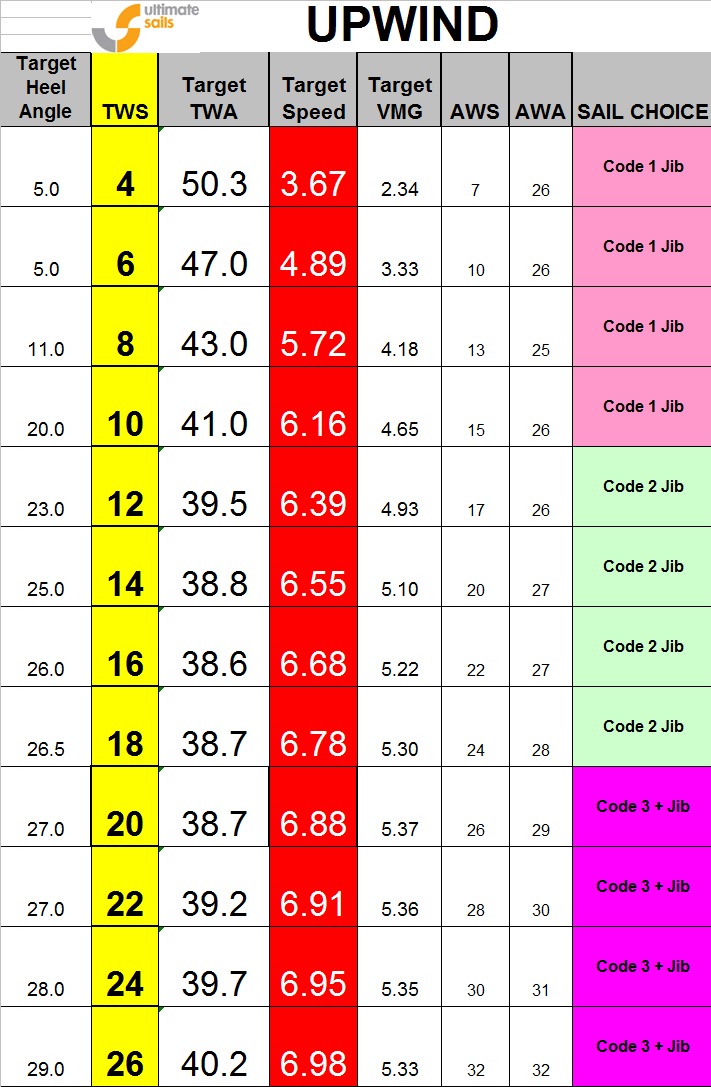 Are there good boat speed targets onboard that include heel angle?
Are there good boat speed targets onboard that include heel angle?
Can heel angle be measured?
Marking everything is invaluable as it makes it a lot easier to replicate fast settings the next time you are out on the boat.
The Headsail trimmer should also have a clear understanding of the rig tune and because it has such an influence on headsail trim, the headsail trimmer will often control it by calling for forestay adjustments, mast tension adjustments etc.
We always carry a blank version of a sail chart (see pic below). Once we've established what the existing sail inventory includes we draw each sail on the chart which is then used to call the correct headsail for each leg of the race. Sail charts can be incorporated into some instrument systems which will then automatically call the best Headsail for any leg based on the wind information at the time. However, the trimmer will always make the final call especially if the wind speed or angle of the next leg is right on the crossover between two sails. Then you have to think about whether the wind is likely to increase or decrease or change direction and how that would affect sail choice. The enclosed diagram here is of typical Headsail set up for 40 ft racing boat.
Headsail selection
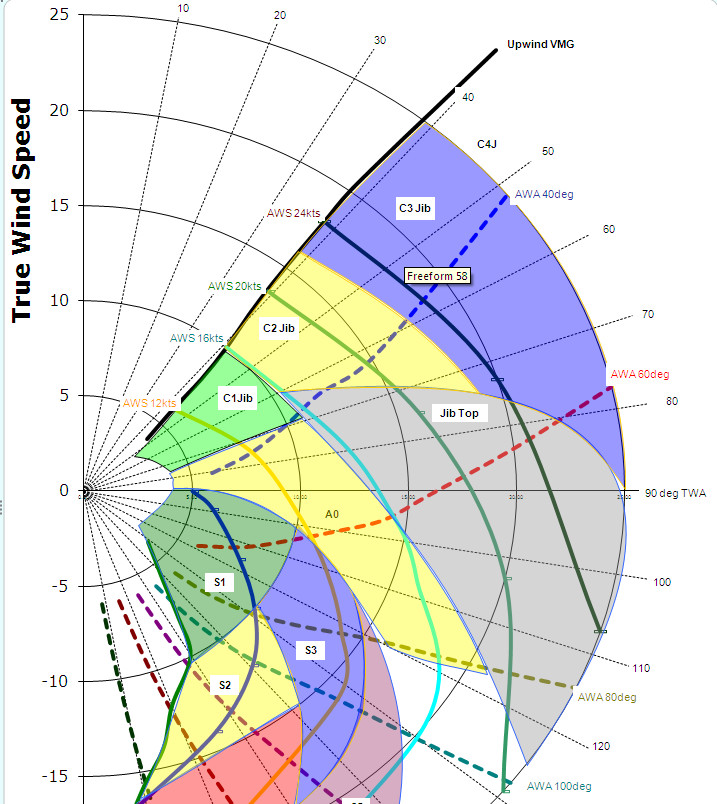 The general rule in changing headsails is driven by heel angle and if this exceeds 25 degrees you need to change to a smaller headsail. Be careful not to try to sail with too small a headsail in medium and strong winds especially in big waves. It is impossible to feather a boat (bring it closer to the wind in gusts to keep it upright) when the sails are too flat and easy to stall. A good sized headsail with reasonable shape is easy to feather over the waves. As a rule you should have sufficient sail area and power for the lulls and then feather the boat in the puffs. Changing to a smaller Headsail not only reduces heel but removes shape from the back of the sail and enables the mainsheet traveller to be dropped down the track, depowering the leech and reducing weather helm.
The general rule in changing headsails is driven by heel angle and if this exceeds 25 degrees you need to change to a smaller headsail. Be careful not to try to sail with too small a headsail in medium and strong winds especially in big waves. It is impossible to feather a boat (bring it closer to the wind in gusts to keep it upright) when the sails are too flat and easy to stall. A good sized headsail with reasonable shape is easy to feather over the waves. As a rule you should have sufficient sail area and power for the lulls and then feather the boat in the puffs. Changing to a smaller Headsail not only reduces heel but removes shape from the back of the sail and enables the mainsheet traveller to be dropped down the track, depowering the leech and reducing weather helm.
Sheeting
The angle that the Headsail makes to the centreline of the yacht is the sheeting angle and on most boats it varies between 6 and 12 degrees although some of the latest racing yachts are sheeting closer to 3 degrees! A narrow angle enables the boat to point high and can be used in ideal conditions; medium winds, flat water, efficient underwater shape, good helmsman or when you need to point high. A wider sheeting angle means the boat will “foot” (go through the water faster at a lower angle) and tends to be better at the extremes of light or strong winds, or when the Headsail is slightly too big for the wind strength or if its choppy or if the boat is inefficient or when you need to go fast and low anyway. On a well sailed yacht the sheeting angle will be changed constantly by adjusting the in haulers or track positions. Most yachts with non overlapping headsails don’t have the jib tracks close enough to the centreline and use in haulers to pull the clew inboard of the track to the correct position.
The in haulers are used even in stronger winds to hold the clew inboard and sheet tension is adjusted to twist the top of the sail to depower when needed. As the wind increases and it becomes more difficult to keep the boat balanced or when the mainsail starts to flog more than 50% of the time the inhaulers should be eased to help depower the rig.
They’re often led to the windward side so the trimmers can adjust without leaving the rail.
Headsail sheet tension
Sheet tension adjusts the twist, the depth of camber and the sheeting angle, easing the sheet means less pointing and more speed. It is vital to change the sheet tensions as the wind speed increases or decreases to keep basic trim, Wind speed changes all the time and the trimmers aim is to prevent gusts and lulls from distorting the perfect sail shape. Secondly the trimmer needs to work very closely with the helm by trimming for big waves or big changes in course as the boat hits waves or works around them. The headsail trimmer and the helm must work as one to maximise the performance and win races. The best guide for sheet tension on most yachts is to use the spreader, if the yacht has overlapping Headsails then the sail will be sheeted outside of the spreader and most of the time the trimmer will be working to keep the leech as close to the spreader as possible. Most boats with overlapping Headsails struggle to get the leech of the headsail close enough to the centreline for good pointing. We can design the Headsail so that it sheets really closely around the spreader and even then the trimmers in these types of boats will be winding the leech hard against the spreader to help pointing. The J109 is a good example of how to refine the sheeting and design of the Headsail to maximise pointing ability. Its overlapping No1 Genoa normally wraps around the outside of the top spreader. However by designing a little more hollow into the leech at the top spreader the sail sheets in front of it and can be sheeted harder which improves pointing ability. In light winds the sail needs to be eased away from the spreader to give the helm the ability to foot faster and build speed and remember that when the Headsail is sheeted hard and the wind drops even a little the sail will tighten on the leech and need to be re trimmed to maintain speed. If the yacht has non overlapping Headsails the spreaders should be marked with tape at 100mm intervals to enable the trimmers to replicate fast settings.
Sheet leads.
Setting the sheet lead position affects the twist and depth in the sail. Twist is the change in angle of the chords to the centreline from the foot to the head of the sail and is necessary because of the twist in the wind called shear. When the sail twist matches the wind twist the sail is perfectly trimmed from top to bottom and the sail will lift evenly at every height up the luff as you head up towards the wind past close hauled. The sheet lead position should be set to achieve this. For overlapping Headsails start with a rough guide of bisecting the clew angle and fine tune from there. On non overlapping headsails the sheet angle will be steeper, more like 70% up the luff. A sheet guide on the clew of the sail is a useful way of getting to the correct settings quickly especially if you often have different trimmers onboard. If the top telltale lifts before the bottom the sail is too twisted so move the car forward to increase leech tension and reduce twist which will also add depth and power to the foot.
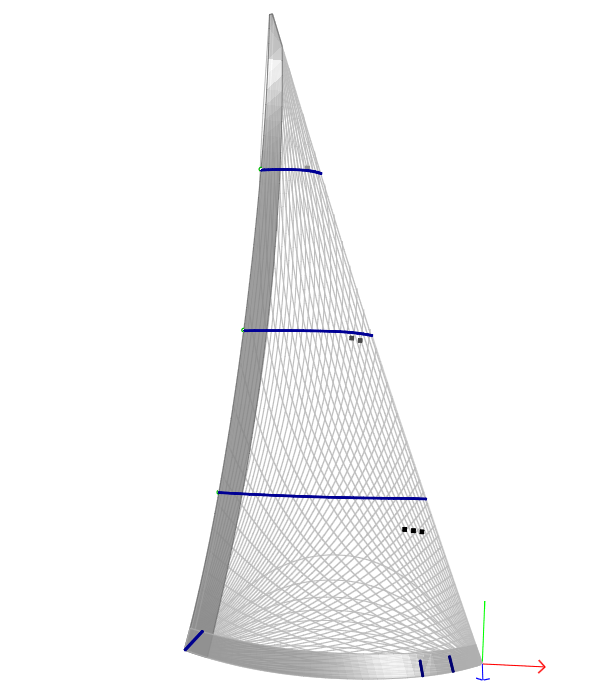 This Headsail includes a sheeting mark at clew, marks for furling position near tack, Camber stripes to help achieve a fast shape profile and telltales on luff .
This Headsail includes a sheeting mark at clew, marks for furling position near tack, Camber stripes to help achieve a fast shape profile and telltales on luff .
Halyard tension
Increasing halyard tension moves the draft forward and with non overlapping headsails especially reduces twist with increased leech tension. This effect happens because the sheet is pulling almost directly opposite the halyard. Easing halyard tension increases twist and has the same effect as easing the sheet however if the halyard is eased too much the sail entry will become too flat and difficult to steer to. Halyard affects the top of the sail more and sheet affects the bottom of sail. So more halyard moves the draft forward and the resultant deeper entry is easier to use in choppy conditions. Draft forward is good for choppy conditions, strong winds or footing fast. Draft aft is good for flat water, medium wind and pointing high
Headstay sag
The amount of headstay sag controls depth in the middle and upper sections of the headsail and the entry angle of the sail. A deep sail (and especially entry) is necessary for conditions that need power such as light winds, choppy conditions or when you need to go fast. Sag the headstay by easing the backstay to increase sail camber, a good trimmer will be calling the backstay adjustment all the time in light and medium conditions to ensure the headsail is trimmed perfectly. It’s the first sail that sees the wind and if it’s not set properly then the rest of the sail plan has no chance. You can check the forestay sag visually by looking up the sail from the tack and notice that a gust will cause the forestay to sag automatically just when you need it to be tighter. Good gust calls from the rail allow the mainsheet trimmer or runner trimmer to act before the gust hits and tighten the backstay so the boat accelerates rather than heel and trip up. You need a lot of range in the backstay as it is one of the most important adjustments for the headsail on the boat but most boats use it only to trim the mainsail and don’t look at what’s happening to the headsail as the wind changes. In light airs easing the backstay also allows the luff of the sail to sag to leeward (luff twist) and this can be fast in light and choppy conditions but it’s a disaster in strong winds. Sag mainly adds depth to the front of the sail giving it a “knuckle fronted” entry. So increasing backstay reduces headstay sag and flattens the sail, easing backstay decreases twist and adds power to the top of the headsail.
Use the camber stripes to give you a visual on the sails profile and when the boat is fast take a picture of the sail shape which can be analysed later to help you better understand how the controls affect the shape and performance of the sail.
Telltales
Make sure you have enough of them to be able to see how the wind is flowing across the entire sail. They should be placed on the luff at approx 25%, 50% and 75% height and 200mm to 400mm back from the luff. Also on non overlapping headsails you should make sure the sails have telltales on the leech as these sails tend to stall quicker than overlapping sails. In light winds if the leeward telltale is stalled then the trimmer should immediately ease the sheet to help the air flow re attach to the sail so that the helm can head up. It quicker and better to do this than the helm to head up suddenly with increased rudder angle and a stalled headsail! If the sheet is eased first and the helm starts to luff up in coordination with the trimmer then the boat will accelerate much faster.
The windward telltale is the guide to how high your boat can point, the higher you point the higher the tell tale will fly up the sail and the trimmer and helm need to work together to find the best angle for the boat. In general horizontal is good for speed or when you need to power through a chop or to accelerate after a tack. Sailing with the windward telltale above horizontal may be good when you need to point high in smooth water or need to outpoint another boat or depower in a breeze but if the telltale is jumpy you might need to increase halyard tension or ease backstay to induce headstay sag or increase luff tension to round the front of the sail up. If the windward telltale is insensitive to steering changes then the luff is too round for the conditions and you should reduce headstay sag. On a reach the headsail trimmer should set the sail to try and ensure the telltales stream horizontally all the time.




